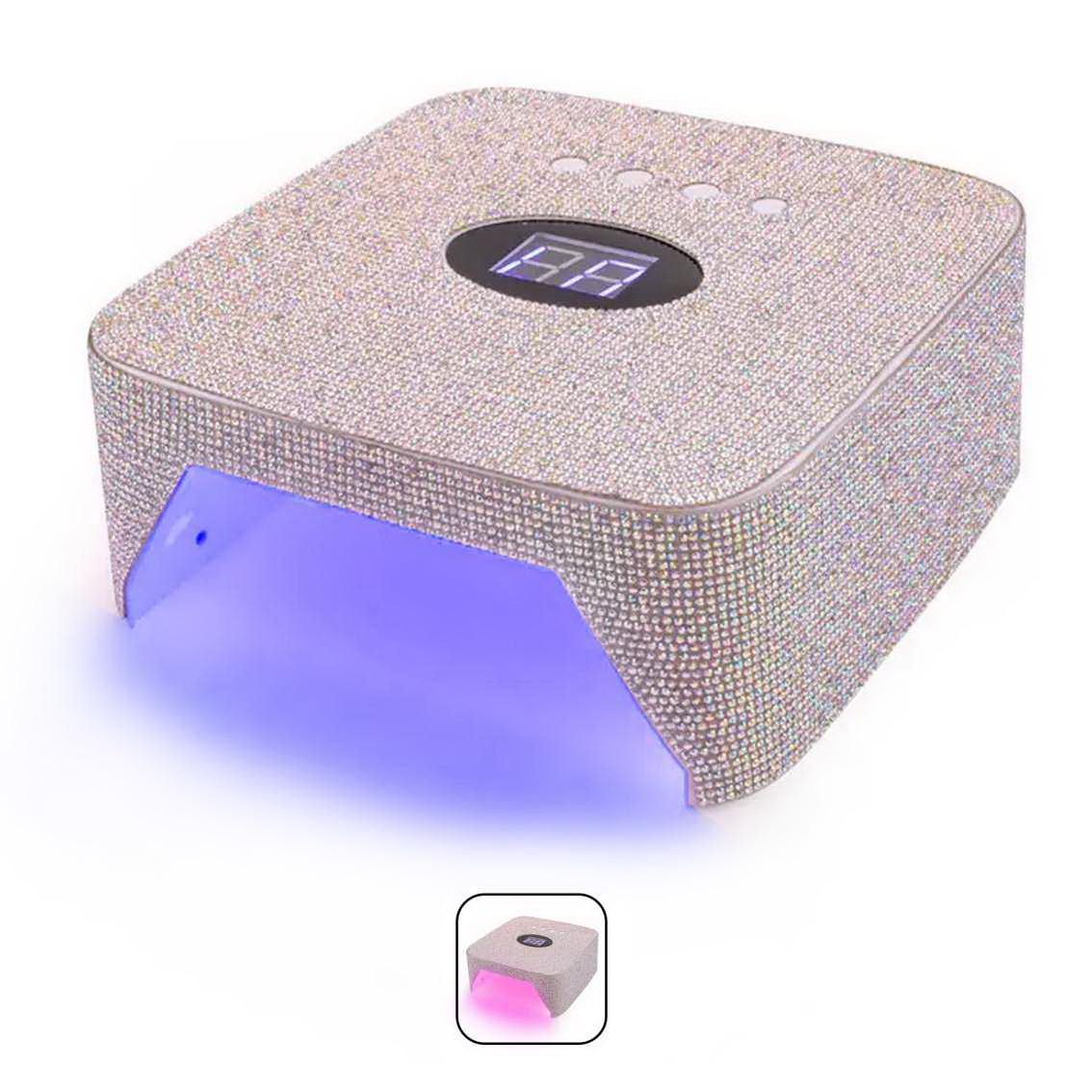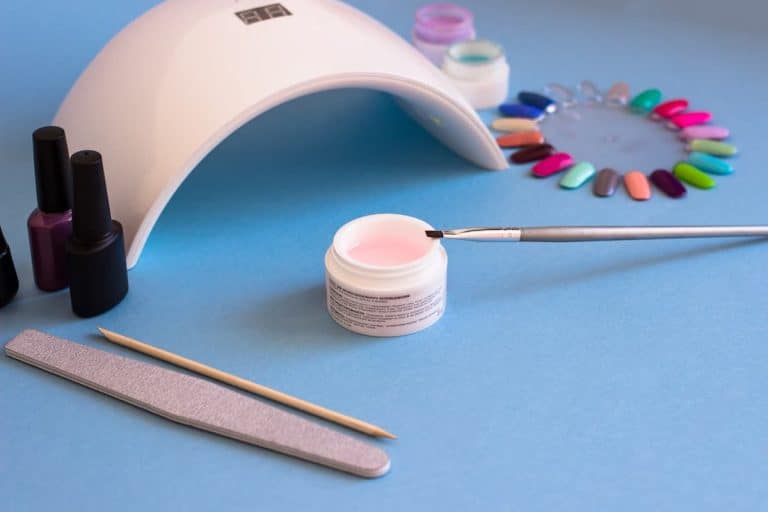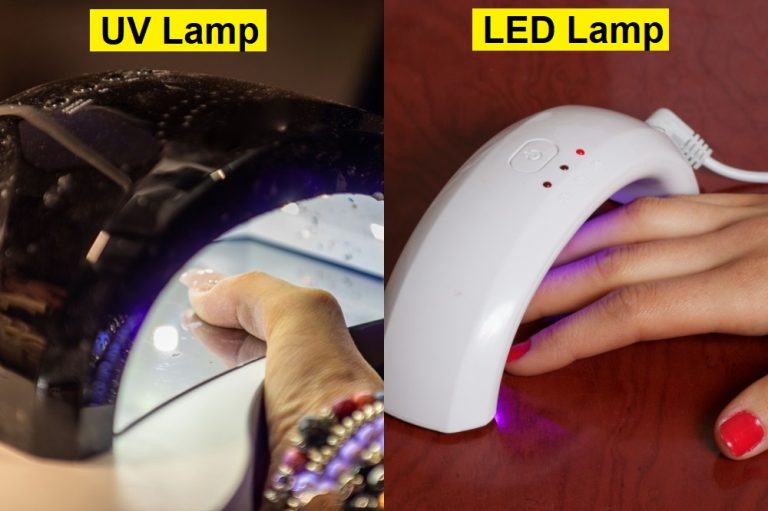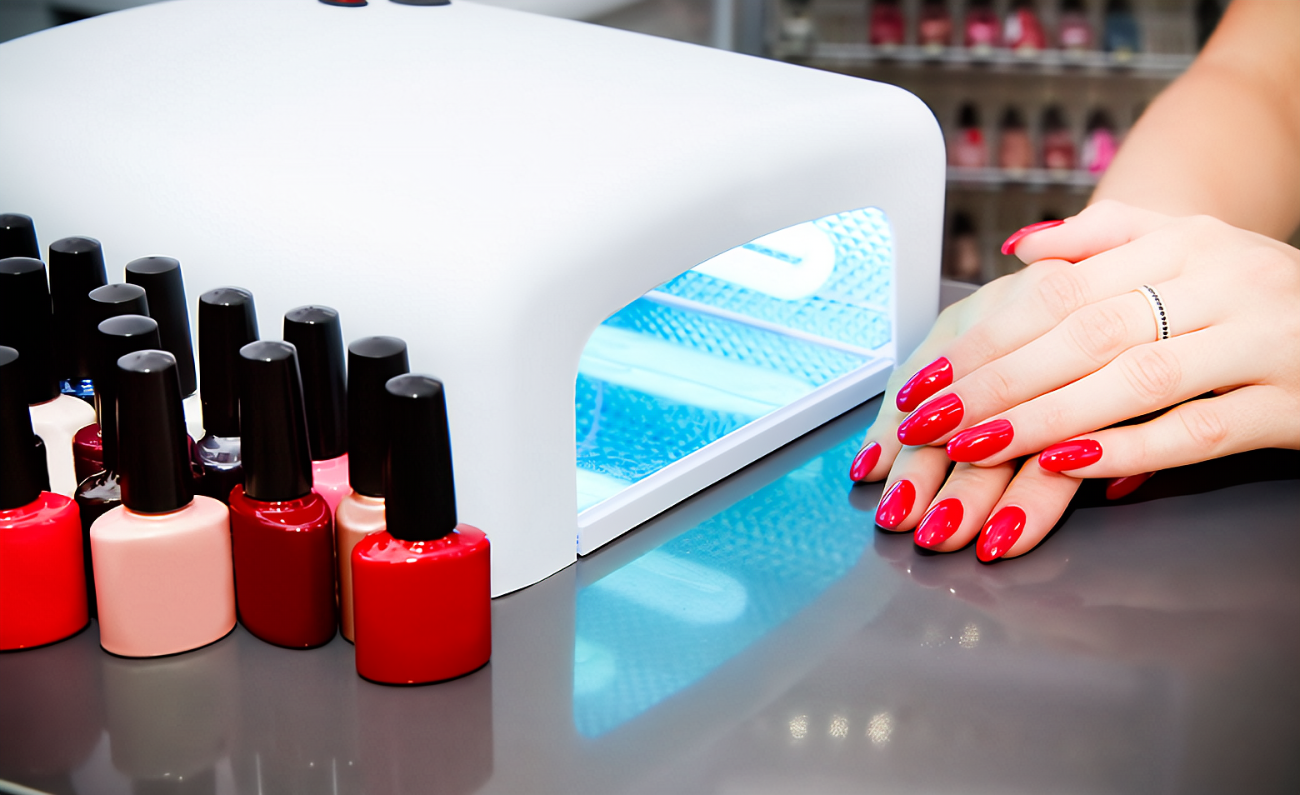Welcome to iksbeauty, your trusted source for customized nail solutions. In this article, we will delve into the intriguing topic of UV nail lamps and their potential link to skin cancer. With a growing concern among nail salon clients and professionals, it’s crucial to understand the facts surrounding this issue. We will explore the scientific research, expert opinions, and safety measures related to UV nail lamps. By the end of this article, you’ll have a comprehensive understanding of whether UV nail lamps can indeed cause skin cancer. So let’s dive in and shed light on this important subject.
What are UV Nail Lamps?
UV nail lamps are specialized devices used in the nail industry for curing and drying gel-based nail products. These lamps emit ultraviolet (UV) light, specifically UVA and UVB rays, which play a crucial role in the polymerization process of gel nail enhancements. UV nail lamps consist of a series of UV bulbs strategically positioned to evenly distribute the UV light across the nail surface, ensuring optimal curing and long-lasting results. These lamps are commonly found in professional nail salons and are designed to accelerate the drying time of gel nails, providing a quick and efficient solution for clients.
Understanding the basic principles and applications of UV nail lamps is essential for both nail technicians and clients seeking durable and beautiful nail enhancements. By harnessing the power of UV light, these lamps contribute to the convenience and efficiency of gel nail treatments. However, it is important to examine the potential implications of prolonged exposure to UV radiation and its association with skin cancer. Let’s explore this connection further in the following sections.
Is There a Link Between UV Nail Lamps and Skin Cancer?
With the increasing popularity of gel nail treatments, concerns have been raised regarding the potential association between UV nail lamps and the development of skin cancer. It is crucial to examine the available research and expert opinions to determine whether there is indeed a link between these two.
Numerous studies have been conducted to investigate the potential risks of UV radiation exposure from nail lamps. Some research suggests that the levels of UV radiation emitted by these lamps are relatively low and unlikely to cause significant harm. However, other studies have indicated that prolonged and repeated exposure to UV radiation, even at lower levels, may contribute to an increased risk of skin cancer.
Expert opinions on this matter vary. While some professionals argue that the short exposure time during gel nail treatments poses minimal risk, others advise caution and recommend taking preventive measures to minimize potential harm. It is important to note that UV nail lamps are not the only sources of UV radiation, as natural sunlight and tanning beds also emit UV rays.
In the next sections, we will delve deeper into the effects of UV radiation on the skin and explore the different types of skin cancer and their associated risk factors. By gaining a comprehensive understanding of the available research and expert opinions, we can make informed decisions regarding the potential risks and necessary precautions related to UV nail lamps.
The Impact of UV Radiation on the Skin
UV radiation, comprising both UVA and UVB rays, has the potential to cause significant damage to the skin. Understanding the distinct effects of UVA and UVB radiation is essential in assessing their impact on skin health.
UVA Radiation: UVA rays have a longer wavelength and can penetrate the deeper layers of the skin, reaching the dermis. They contribute to premature skin aging, such as wrinkles, fine lines, and age spots. UVA radiation can also suppress the immune system, making the skin more susceptible to damage.
UVB Radiation: UVB rays have a shorter wavelength and primarily affect the outer layer of the skin, the epidermis. They are responsible for sunburns and are considered the main cause of skin cancer. UVB radiation damages the DNA in skin cells, leading to mutations that can potentially result in the development of cancerous cells.
Both UVA and UVB radiation can contribute to the development of various types of skin cancer, including basal cell carcinoma, squamous cell carcinoma, and melanoma. It is important to note that exposure to UV radiation, whether from natural sunlight or artificial sources like UV nail lamps, increases the risk of these adverse effects on the skin.
In the following sections, we will explore different types of skin cancer, their associated risk factors, and the role of UV nail lamps in potential UV radiation exposure. By understanding the specific effects of UV radiation on the skin, we can better evaluate the risks and take appropriate measures to protect ourselves and our clients in the nail salon environment.
Types of Skin Cancer and Risk Factors
Skin cancer encompasses various types, each with its own characteristics and associated risk factors. Understanding these different types and their risk factors is crucial in evaluating the potential connection between UV nail lamps and skin cancer.
1. Basal Cell Carcinoma (BCC): Basal cell carcinoma is the most common type of skin cancer. It typically develops on sun-exposed areas of the skin, such as the face, neck, and hands. Risk factors for BCC include excessive sun exposure over a lifetime, a history of sunburns, a weakened immune system, and certain genetic conditions.
2. Squamous Cell Carcinoma (SCC): Squamous cell carcinoma also predominantly occurs on sun-exposed areas of the skin. It tends to grow more rapidly and can potentially spread to other parts of the body. Risk factors for SCC include chronic sun exposure, previous skin injuries or burns, exposure to certain chemicals, and immunosuppression.
3. Melanoma: Melanoma is the most dangerous type of skin cancer and can develop anywhere on the body, including areas not exposed to the sun. Risk factors for melanoma include a history of sunburns, excessive sun exposure, a large number of moles, atypical moles, family history of melanoma, and genetic predisposition.
It is important to note that while excessive sun exposure is a significant risk factor for skin cancer, it is not the sole contributing factor. Other elements, such as genetic factors and personal medical history, can also influence an individual’s susceptibility to developing skin cancer.
In the following sections, we will examine the use of UV nail lamps in the context of these risk factors and assess the potential implications for skin cancer development. By understanding the different types of skin cancer and their associated risk factors, we can better evaluate the overall risk landscape and make informed decisions regarding the use of UV nail lamps.
UV Nail Lamp Usage in the Nail Industry
UV nail lamps are widely used in the nail industry for their efficiency in curing gel-based nail products. Understanding their role, frequency of use, and light intensity is essential in evaluating the potential implications of UV radiation exposure in the context of nail treatments.
1. Purpose of UV Nail Lamps: UV nail lamps are designed to cure and harden gel nail products efficiently. By emitting UV light, these lamps activate photoinitiators present in the gel, initiating the polymerization process and resulting in durable and long-lasting nail enhancements. The lamps provide a controlled environment that accelerates the drying time, allowing nail technicians to complete gel nail treatments quickly and effectively.
2. Frequency of UV Lamp Usage: The frequency of UV lamp usage in the nail industry varies depending on the specific nail treatment and individual salon practices. Typically, UV nail lamps are used during gel nail applications, including gel polish, gel extensions, and gel overlays. The duration of exposure to UV radiation from the lamp can range from a few seconds to a few minutes, depending on the brand of gel and the desired curing time.
3. Light Intensity of UV Nail Lamps: UV nail lamps emit UV radiation, primarily in the UVA spectrum. The intensity of the UV light can vary depending on the specific lamp and its design. It is important to note that different models of UV nail lamps may have varying levels of UV radiation output. Some lamps may have built-in safety features that filter or reduce the amount of UV radiation emitted, while others may emit higher levels of UV radiation.
In the subsequent sections, we will delve into the research surrounding UV nail lamps and their potential impact on skin health. By understanding the usage patterns and light intensity of UV nail lamps in the nail industry, we can better assess the potential risks and explore ways to minimize any potential harm.
Research Findings and Controversies
Research on the potential link between UV nail lamps and skin cancer has yielded various findings, leading to both support and skepticism regarding the association. It is important to review these research outcomes and understand the different perspectives surrounding the topic.
1. Supporting Evidence: Some studies suggest that the levels of UV radiation emitted by UV nail lamps are relatively low and may not pose a significant risk for skin cancer development. These findings often emphasize the short exposure time during nail treatments and the limited surface area of the skin being exposed to the UV light. Additionally, proponents argue that the risk of skin cancer from UV nail lamps is comparable to other common activities involving UV exposure, such as spending time outdoors.
2. Challenging Perspectives: On the other hand, some studies and experts raise concerns about the cumulative effects of prolonged and repeated exposure to UV radiation, even at lower levels. They argue that frequent nail salon visits and continuous exposure to UV nail lamps over an extended period could potentially increase the risk of skin cancer. These perspectives often highlight the importance of considering individual susceptibility, as some individuals may have a higher sensitivity to UV radiation or possess genetic predispositions that increase their vulnerability.
While research findings can provide valuable insights, it is essential to acknowledge the ongoing debates and the need for further investigation. Different scientific studies may have varying methodologies, sample sizes, and outcomes, contributing to the existing controversies surrounding this topic.
In the upcoming sections, we will explore the implications of UV radiation on the skin and examine the precautions and safety measures that can be implemented in the nail salon environment. By considering a range of research findings and differing viewpoints, we can form a comprehensive understanding of the potential risks associated with UV nail lamps and their impact on skin health.
How to Minimize Potential Risks
When using UV nail lamps, there are safety recommendations and measures that can be implemented to minimize the potential risk of skin cancer. By following these guidelines, individuals can enjoy the benefits of gel nail treatments while taking proactive steps to protect their skin health.
1. Use Protective Gloves: Wearing protective gloves during gel nail treatments can provide an additional barrier between the UV radiation and the skin on the hands. Specialized UV-protective gloves are available, designed to block a significant portion of UV rays. By incorporating gloves into the nail application process, direct exposure of the skin to UV radiation can be reduced.
2. Apply Broad-Spectrum Sunscreen: Applying a broad-spectrum sunscreen with a high SPF to the hands, wrists, and exposed areas of the skin before UV nail lamp usage can help protect the skin from harmful UV rays. The sunscreen should offer both UVA and UVB protection and be reapplied as directed on the product label.
3. Limit Exposure Time: Minimizing the duration of exposure to UV nail lamps is crucial. Nail technicians should follow manufacturer instructions regarding the recommended curing times for gel products. Clients can discuss with their nail technicians to ensure that the exposure time is kept to a minimum while still achieving proper curing.
4. Regular Skin Examinations: Regularly examining the skin for any changes or abnormalities is essential for early detection of skin cancer. Individuals who frequently use UV nail lamps should be vigilant and perform self-examinations, checking for new moles, changes in existing moles, or any other concerning skin irregularities. If any concerning signs are noticed, it is recommended to consult a dermatologist for a thorough examination.
In the upcoming sections, we will explore alternative options in the nail industry that do not rely on UV nail lamps. By implementing these safety recommendations and measures, individuals can enjoy gel nail treatments with reduced potential risks and a greater focus on maintaining skin health.
Alternative Options:
In order to minimize potential risks of skin cancer associated with UV nail lamps, there are alternative nail techniques and devices available that do not rely on UV light. These alternatives provide a safer approach to nail enhancements while reducing the potential risks to skin health.
1. LED Nail Lamps: LED nail lamps utilize light-emitting diodes (LEDs) instead of UV bulbs to cure gel nail products. LED lamps emit a narrower spectrum of light, primarily targeting the specific wavelengths required for gel curing. LED nail lamps typically have shorter curing times and emit less heat compared to UV nail lamps, making them a popular alternative in the nail industry.
2. Dip Powder Systems: Dip powder systems involve a different application technique that eliminates the need for UV light. This method utilizes a combination of adhesive and colored powders to create durable and long-lasting nail enhancements. The nails are dipped into the powder and sealed with a topcoat, resulting in a glossy and chip-resistant finish.
3. Natural Nail Care: An alternative option that eliminates the use of artificial enhancements altogether is natural nail care. This approach focuses on maintaining and enhancing the health and appearance of natural nails through proper nail care practices, regular moisturization, and the use of strengthening and nourishing products.
By exploring these alternative techniques and devices, individuals can still enjoy beautiful and durable nails without the potential risks associated with UV nail lamps. Nail technicians can provide guidance and recommendations on the best alternatives based on individual preferences and nail care goals.
In the following sections, we will discuss the importance of education and awareness in the nail industry, emphasizing the need for understanding the potential risks and making informed choices that prioritize skin health.
Importance of Education and Awareness
Raising awareness and promoting education regarding the potential association between UV nail lamps and skin cancer is crucial within the nail industry and among consumers. By increasing knowledge and understanding, both nail technicians and clients can make informed decisions and take necessary precautions to prioritize skin health.
1. Nail Industry Education: It is essential to provide comprehensive education to nail technicians about the potential risks associated with UV nail lamps and the importance of implementing safety measures. Training programs and workshops should incorporate information on UV radiation, skin cancer prevention, and alternative techniques. By equipping nail professionals with the necessary knowledge, they can confidently advise clients and create a safer environment within their salons.
2. Consumer Awareness: Raising consumer awareness is equally important to empower individuals to make informed choices regarding their nail treatments. Nail salons can display educational materials and provide brochures that explain the potential risks of UV radiation and the available alternatives. Additionally, salons can engage in open and transparent communication with clients, addressing any concerns and discussing safety measures implemented within their establishment.
3. Collaborative Efforts: Promoting collaboration between the nail industry, dermatologists, and other healthcare professionals is beneficial in enhancing education and awareness. By working together, they can develop guidelines, best practices, and informational resources that promote safe nail care practices and highlight the importance of skin health.
By emphasizing the significance of education and awareness, the nail industry can contribute to the overall well-being of both nail technicians and clients. Increased knowledge and understanding foster a safer and more informed approach to nail care, ensuring that individuals can enjoy beautiful nails while prioritizing their skin health.
In the final section, we will provide a conclusive summary of the key findings and recommendations regarding UV nail lamps and their potential link to skin cancer.
Conclusion and Recommendations
After examining the available research and considering the perspectives surrounding UV nail lamps and their potential link to skin cancer, the following conclusions and recommendations can be drawn to prioritize skin health in the context of nail treatments.
1. Conclusion: While the potential risk of developing skin cancer from UV nail lamps exists, the current evidence is not conclusive. Research findings and expert opinions vary, highlighting the need for continued investigation and comprehensive understanding of individual susceptibility, UV lamp usage patterns, and safety measures.
2. Recommendations: To minimize potential risks and protect skin health when using UV nail lamps, the following recommendations are advised:
- Limit exposure time: Minimize the duration of exposure to UV radiation by following recommended curing times for gel products.
- Use protective gloves: Wear UV-protective gloves during nail treatments to reduce direct UV radiation exposure to the skin.
- Apply broad-spectrum sunscreen: Apply a high SPF broad-spectrum sunscreen to exposed skin areas prior to UV lamp usage.
- Consider alternative options: Explore alternative nail techniques and devices, such as LED nail lamps or dip powder systems, that do not rely on UV light.
- Regular skin examinations: Perform regular self-examinations to detect any changes or abnormalities in the skin and seek professional evaluation when necessary.
Moreover, it is crucial to promote education and awareness within the nail industry and among consumers. By providing comprehensive training for nail technicians and raising awareness among clients, individuals can make informed decisions and prioritize skin health in the pursuit of beautiful nails.
While the use of UV nail lamps continues to be a subject of discussion, taking proactive measures and staying informed can help mitigate potential risks and promote safe nail care practices.
Remember to consult with a healthcare professional or dermatologist for personalized advice regarding skin health and the use of UV nail lamps.




